Classics 10 Midterm
1/63
There's no tags or description
Looks like no tags are added yet.
Name | Mastery | Learn | Test | Matching | Spaced |
|---|
No study sessions yet.
64 Terms

Identification: The Franchthi Cave, located in the Argolid region of Greece, was occupied from around 18,000 BCE to 3200 BCE and provides one of the longest continuous records of human habitation in Europe.
Significance (one sentence): It reveals the gradual transition from Paleolithic hunter-gatherer societies to Neolithic farming communities, offering crucial insight into early human adaptation and the development of agriculture in the Aegean.
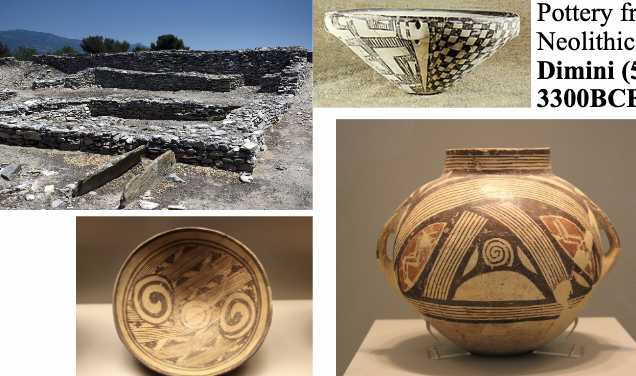
Identification: Pottery from Neolithic Dimini, a settlement in Thessaly, Greece, dating from about 5300–3300 BCE, often decorated with swirling geometric and spiral painted patterns.
Significance (one sentence): Its patterned designs reveal early aesthetic expression and social identity in prehistoric Greece, marking the development of symbolic and communal art long before the classical era.
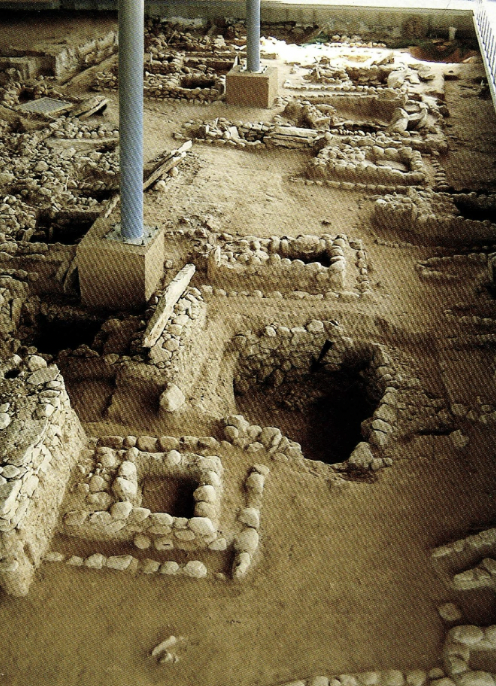
Identification: Early Helladic Cemetery at Tsepi, near Marathon, Greece (3000–2000 BCE), featuring stone-built tombs containing multiple burials with offerings such as pottery, tools, jewelry, and figurines.
Significance (one sentence): The rich variety of grave goods reflects social differentiation, ritual practices, and the development of community identity in early Bronze Age Greece.
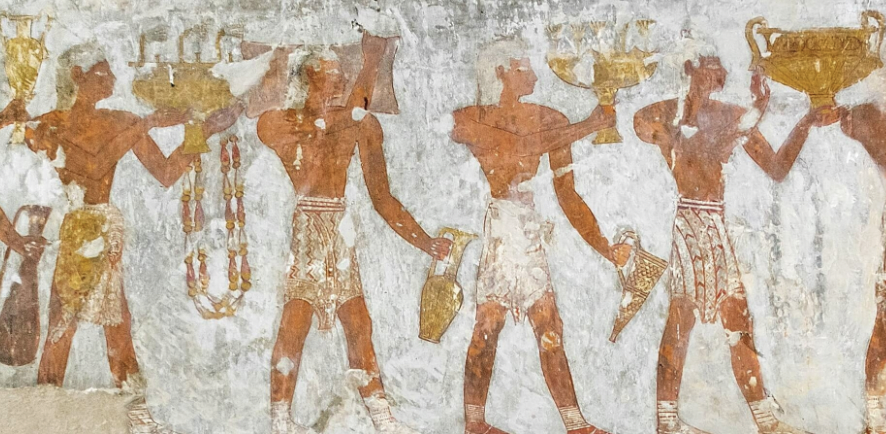
Identification: Inscription and wall painting from the Tomb of Rekhmire in Thebes, Egypt (ca. 1400 BCE), depicting Minoan (“Keftiu”) and Aegean chiefs bringing tribute to Pharaoh Thutmose III.
Significance (one sentence): It illustrates early diplomatic and trade connections between Egypt and the Aegean world, showing how Minoans were perceived as respectful foreign allies within Egypt’s imperial sphere.
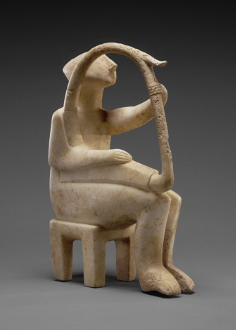
Identification: Cycladic Harp-Player, a marble figurine from the Cycladic Islands, dating to 2700–2300 BCE.
Significance (one sentence): Its abstract form emphasizes the Cycladic focus on music and ritual, illustrating early Aegean artistic expression and cultural values.
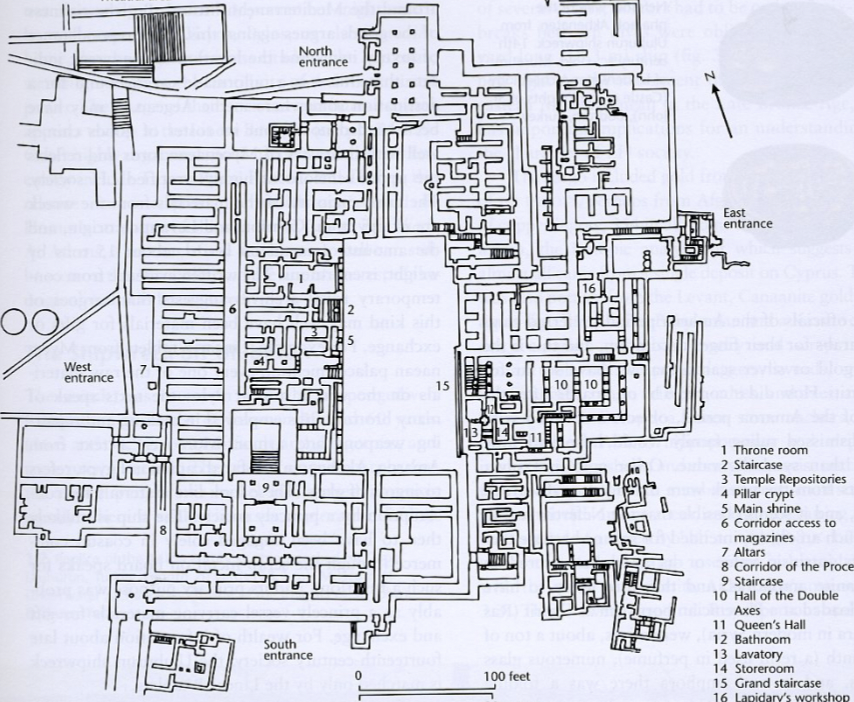
Identification: Ground plan of the Palace of Knossos, located on Crete and dating to the Minoan civilization (c. 1900–1375 BCE).
Significance (one sentence): Its complex, multi-courtyard layout demonstrates the political centralization, advanced architecture, and ceremonial culture of Minoan society.
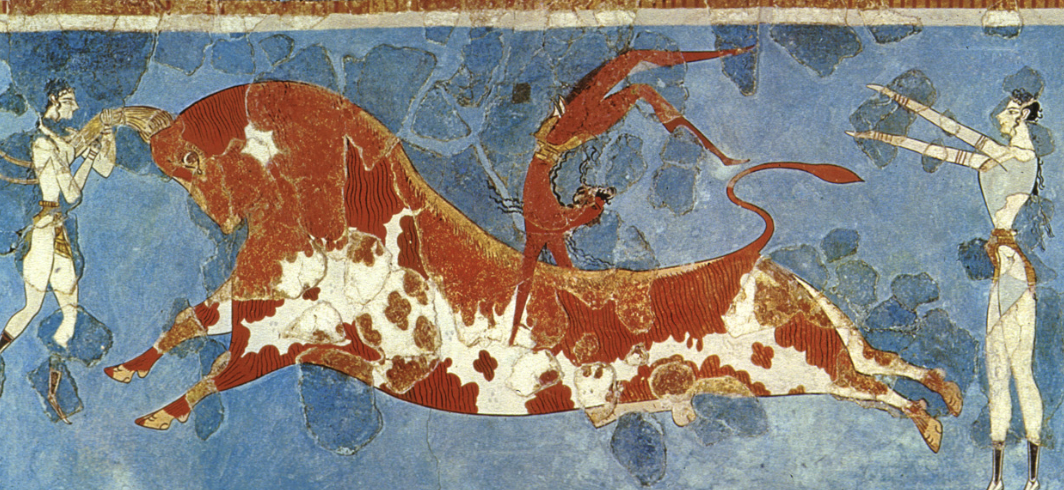
Identification: The Bull-Leaping Fresco from the Palace of Knossos on Crete, dating to the Minoan period (c. 1450–1400 BCE).
Significance (one sentence): It depicts a ceremonial or mythic bull-leaping scene that reveals the importance of ritual, athleticism, and symbolic imagery in Minoan religious and social life.

Identification: The Hagia Triada Sarcophagus, a painted limestone coffin from Crete dating to around 1400 BCE, associated with the Minoan civilization.
Significance (one sentence): Its elaborate scenes of sacrifice and ritual demonstrate Minoan religious beliefs and how they blended with Mycenaean funerary practices during the Late Bronze Age.
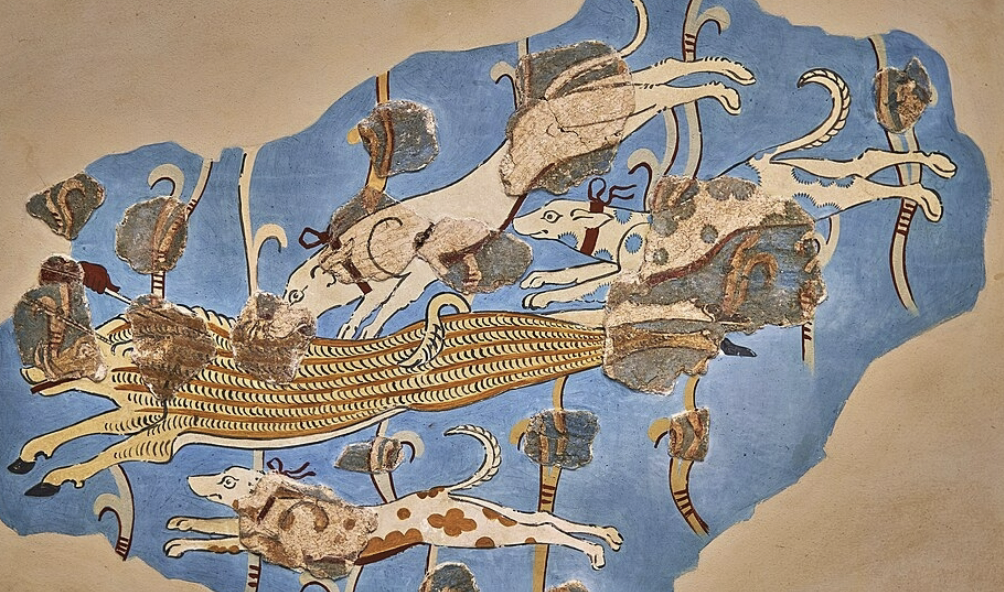
Identification: The Boar Hunt Fresco from Tiryns, Greece, dating to the 13th century BCE during the Mycenaean period.
Significance (one sentence): It reflects the Mycenaean elite’s emphasis on heroism, masculinity, and the hunt as symbols of power and aristocratic identity.

Identification: The Lion Gate at Mycenae, Greece, constructed around 1250 BCE as the monumental entrance to the Mycenaean citadel.
Significance (one sentence): Its massive stone architecture and heraldic lions symbolize royal authority and the strength of the Mycenaean palatial state.
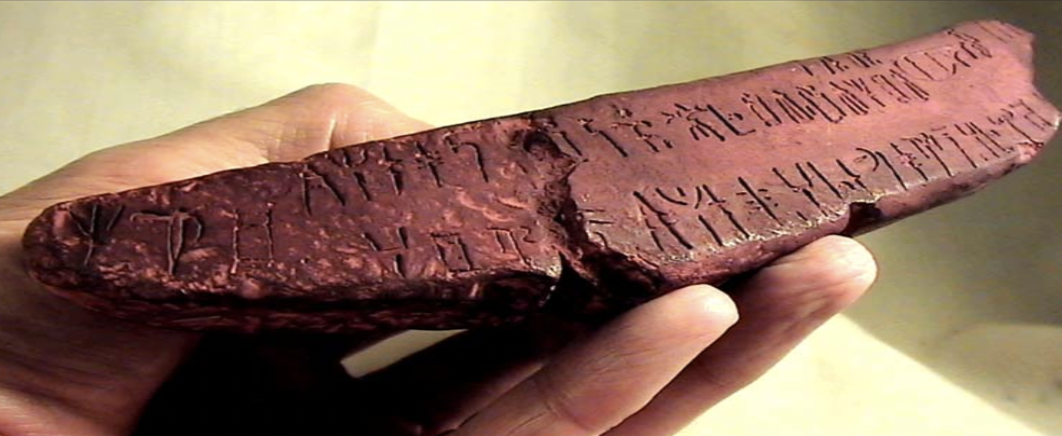
Identification: Linear B, the script used for writing Mycenaean Greek on clay tablets (c. 1450–1200 BCE), deciphered in 1952 by Michael Ventris with foundational contributions from Alice Kober.
Significance (one sentence): It proved that the Mycenaeans spoke an early form of Greek, linking the Bronze Age palatial world to later Greek civilization.
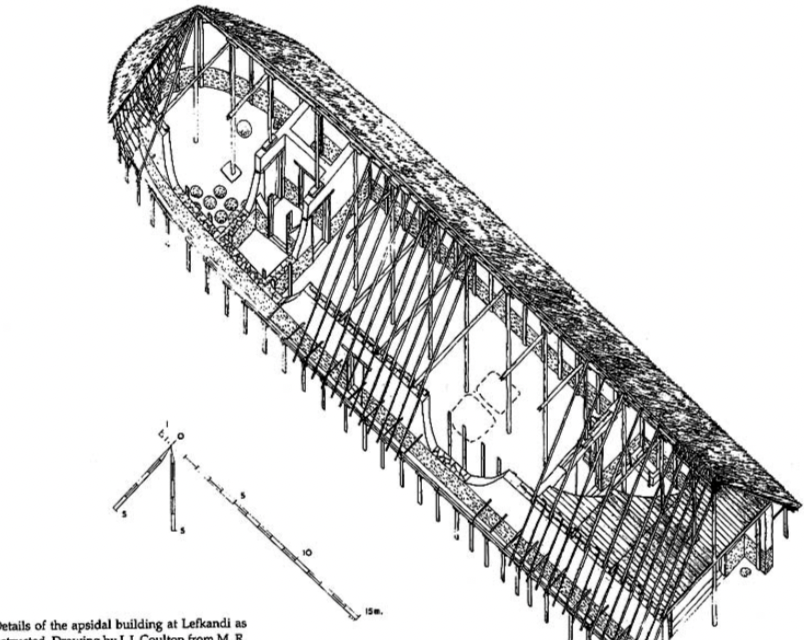
Identification: The Heroön at Lefkandi, Euboea (c. 975 BCE), an Early Iron Age monumental burial structure with multiple shaft graves beneath.
Significance (one sentence): It provides evidence of elite status, possible human and horse sacrifice, and long-distance trade or connections, highlighting the ritual and social complexity of post-Mycenaean chiefdoms in Greece.

Identification: Nestor’s Cup, a small ceramic drinking cup from Pithekoussai, Italy, dating to the 8th century BCE, inscribed with one of the earliest known examples of Greek alphabetic writing.
Significance (one sentence): Its inscription, referencing the legendary Nestor from Homer’s Iliad, shows the early use of writing for social, playful, and literary purposes in Greek colonial communities.

Identification: The Blinding of the Cyclops, a sculptural group from the Sperlonga grotto in Italy, dating to the early 1st century CE, now housed in the Museo Archeologico Nazionale di Sperlonga.
Significance (one sentence): It dramatizes a key episode from Homer’s Odyssey, showing Roman engagement with Greek myth and the adaptation of epic narratives into large-scale, theatrical sculpture.
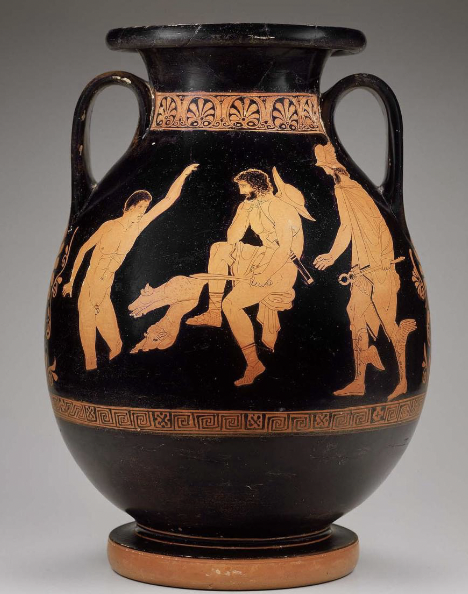
Identification: Attic Red-Figure Pelike depicting Elpenor consulting Odysseus in the Underworld, ca. 390BCE.
Significance (one sentence): It visualizes a scene from Homer’s Odyssey, highlighting Greek beliefs about death, the afterlife, and the importance of proper burial rituals.
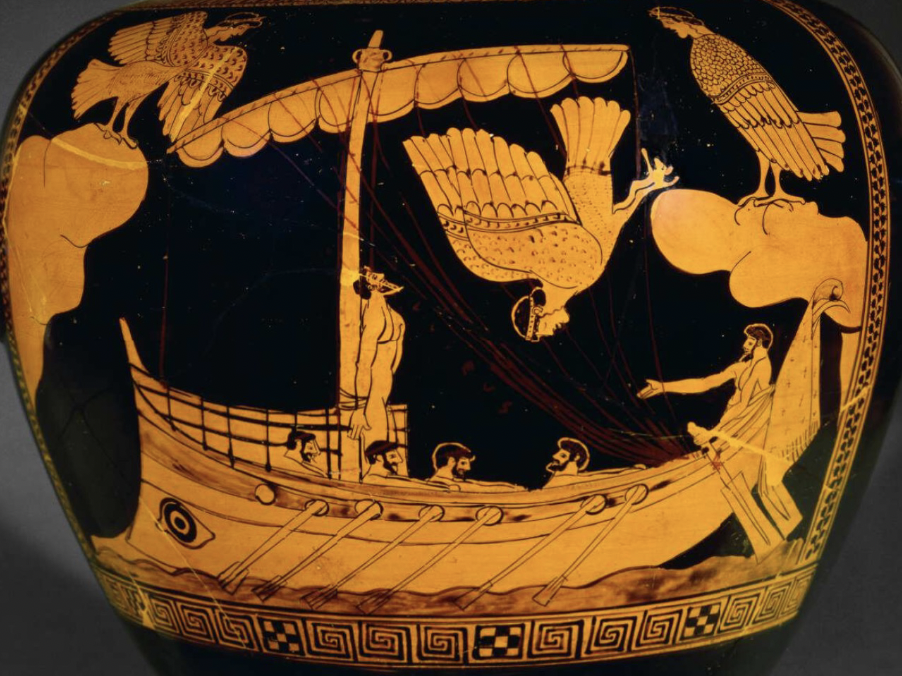
Identification: Detail from the Siren Vase, a Red-Figure Stamnos from Athens, dating to 480 BCE.
Significance (one sentence): It depicts the encounter with the Sirens from Homer’s Odyssey, reflecting Greek interest in myth, music, and the dangers of temptation in visual storytelling.
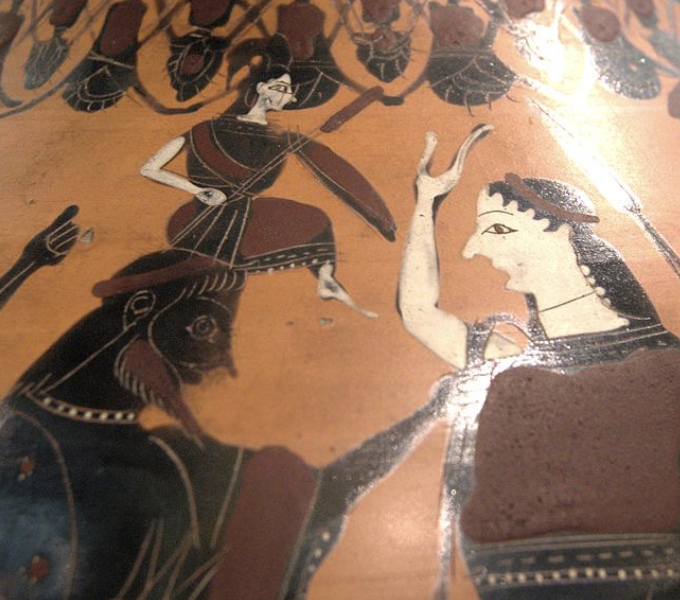
Identification: Black-figure amphora (550 BCE) depicting Athena’s birth from the head of Zeus, accompanied by Eileithyia, goddess of childbirth, housed in the Louvre Museum, Paris.
Significance (one sentence): It illustrates Greek mythological storytelling and the symbolic birth of wisdom and war, highlighting divine power and the role of gods in human and cosmic order.
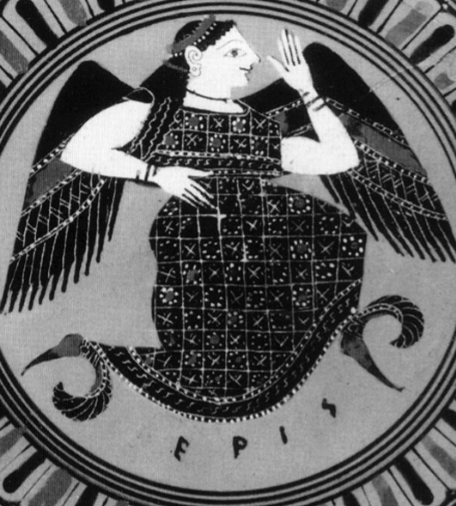
Identification: Early 6th-century BCE Black-Figure Kylix depicting Eris, the goddess of strife, from ancient Greece.
Significance (one sentence): It conveys moral and social lessons through myth, emphasizing the disruptive power of conflict and the consequences of discord in human and divine affairs.
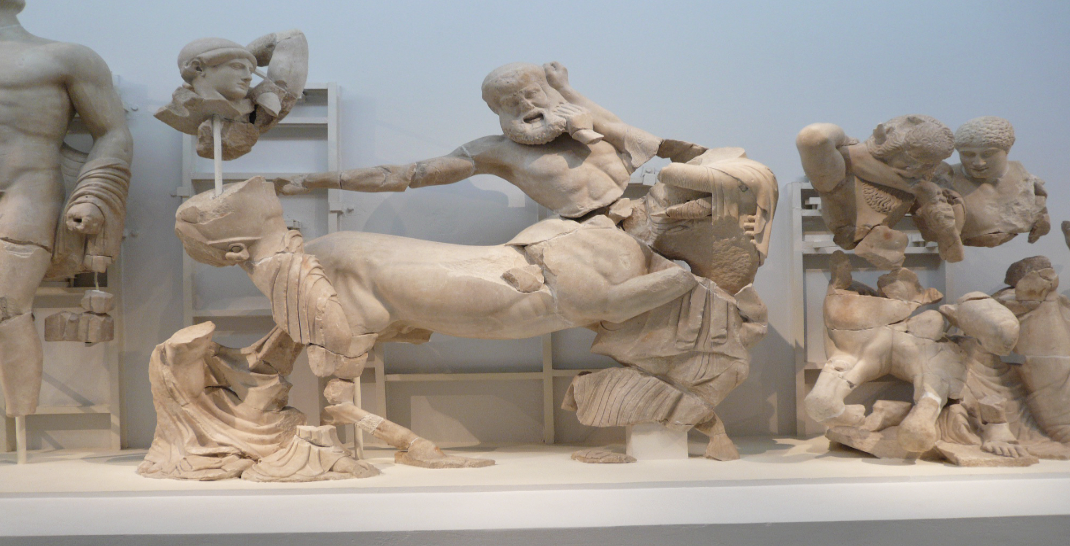
Identification: West Pediment of the Temple of Zeus at Olympia (c. 470–456 BCE), depicting the mythological battle between Lapiths and Centaurs.
Significance (one sentence): It symbolizes the triumph of civilization and order over chaos, reflecting Greek values and ideals through monumental sculptural art.
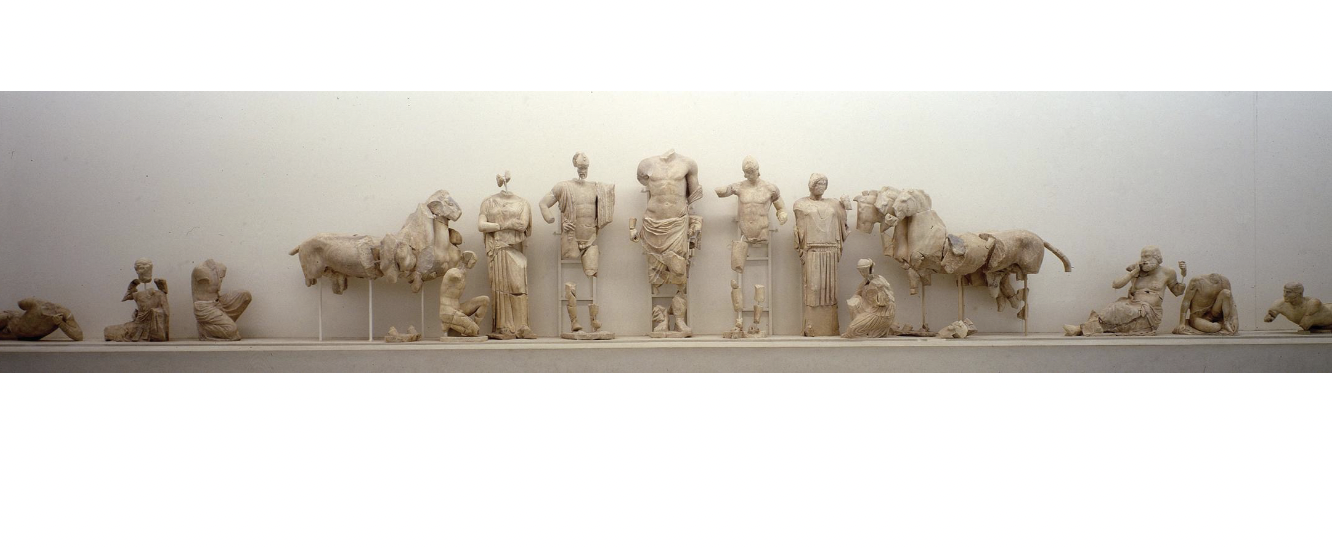
Identification: East Pediment of the Temple of Zeus at Olympia (c. 470–456 BCE), depicting Zeus presiding over the chariot race between Pelops and Oinomaos.
Significance (one sentence): It celebrates divine authority and heroic competition, linking mythological narrative to the cultural and religious significance of the Olympic Games.
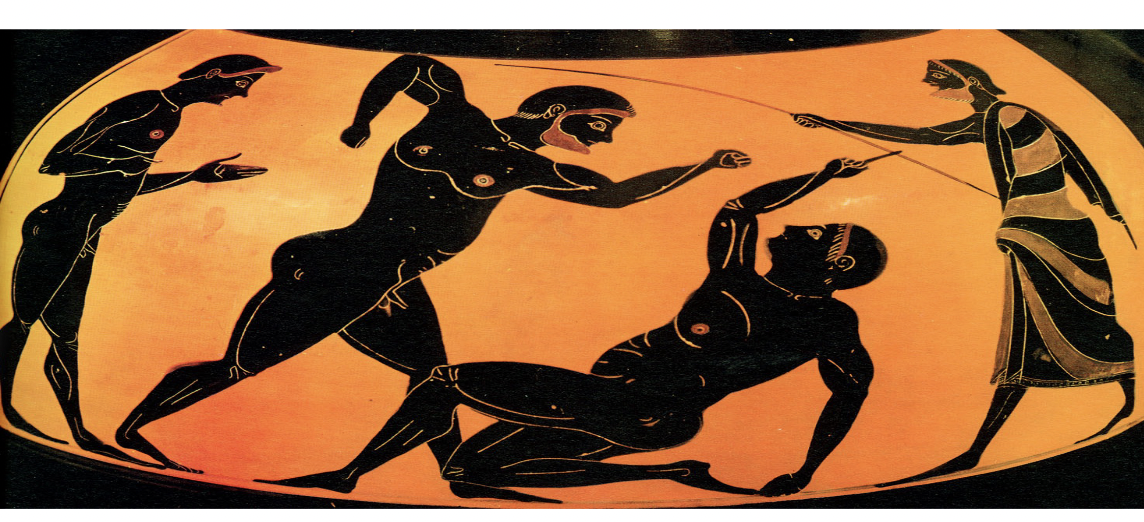
Identification: Ancient Greek pankration, a combat sport combining wrestling and boxing, featured in the Olympic Games (c. 7th century BCE onward).
Significance (one sentence): It shows how the Olympics uniquely allowed intense physical punishment while ensuring isonomia, treating all free men equally under the rules of the competition.
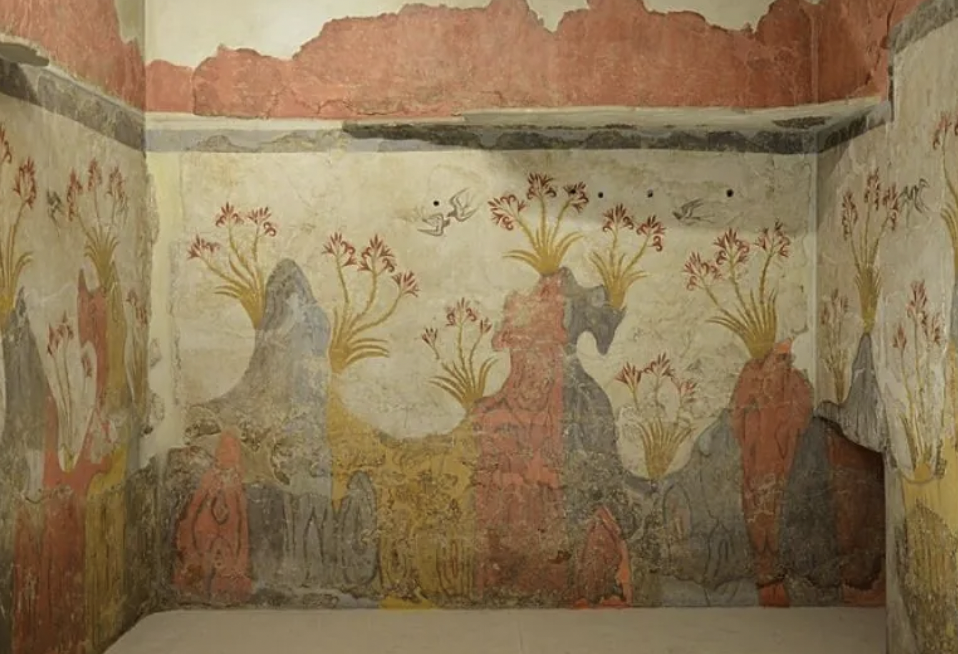
Identification: Spring Fresco from Akrotiri on the island of Thera (Santorini), dating to around 1650 BCE, a Minoan wall painting.
Significance (one sentence): It reflects Minoan artistic skill and appreciation of nature, depicting seasonal landscapes and the importance of natural imagery in Aegean culture.

Identification: Detail from the Flotilla Fresco at Akrotiri, Thera, dating to around 1650 BCE, a Minoan wall painting.
Significance (one sentence): It illustrates Minoan maritime activity, trade, and seafaring prowess, highlighting the centrality of the sea in Minoan economy and culture.
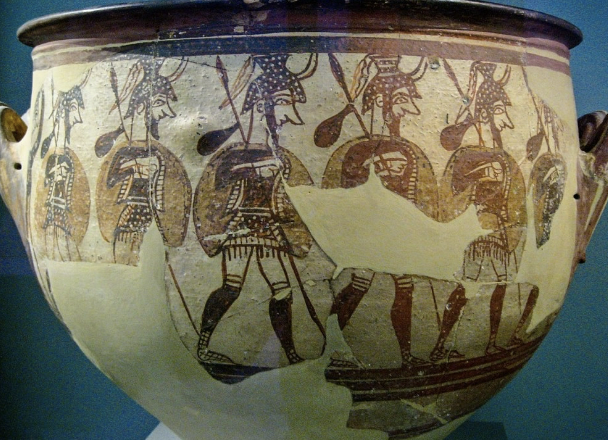
Identification: Warrior Vase from Mycenae, Greece, dating to around 1200 BCE, depicting soldiers in military formation.
Significance (one sentence): It emphasizes the militaristic nature of Mycenaean society and the social importance of warrior identity in late Bronze Age Greece.
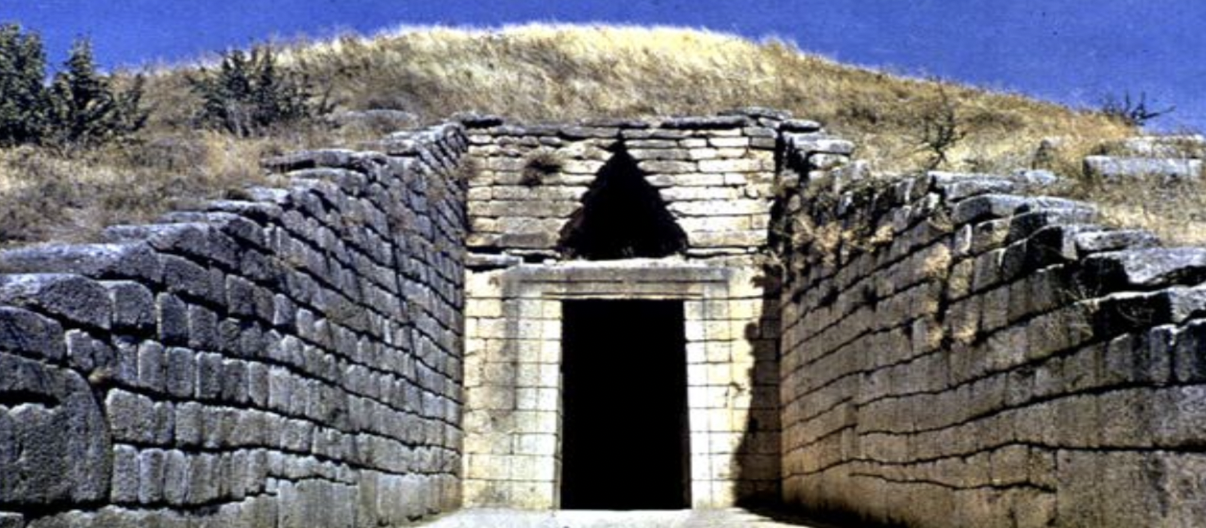
Identification: The ‘Treasury of Atreus,’ a tholos (beehive) tomb at Mycenae, Greece, dating to 1300–1250 BCE.
Significance (one sentence): Its monumental architecture reflects the wealth, power, and sophisticated funerary practices of the Mycenaean elite.
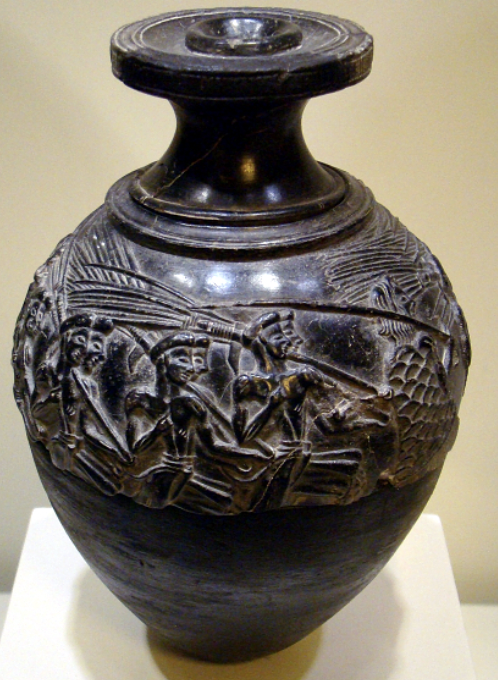
Identification: Harvester Vase, a Minoan rhyton from the Late Bronze Age (c. 1500BCE), used for ritual pouring of liquids.
Significance (one sentence): Its carved scenes of harvesting and procession celebrate agricultural abundance and communal ritual, reflecting Minoan social and religious life.

Identification: Early Helladic town of Lerna, featuring the fortified House of the Tiles with an internal staircase, dating to around 2200 BCE.
Significance (one sentence): It reflects early urban planning, administrative complexity, and emerging social hierarchy in Bronze Age mainland Greece.

Identification: The Omphalos of Delphi, a marble sculpture from the late 1st century CE, symbolizing the navel or center of the world, as described in Hesiod’s Theogony (398–401).
Significance (one sentence): It represents Delphi’s sacred status as the cosmic center of the Greek world, linking myth, geography, and divine authority through Zeus’s establishment of the site.
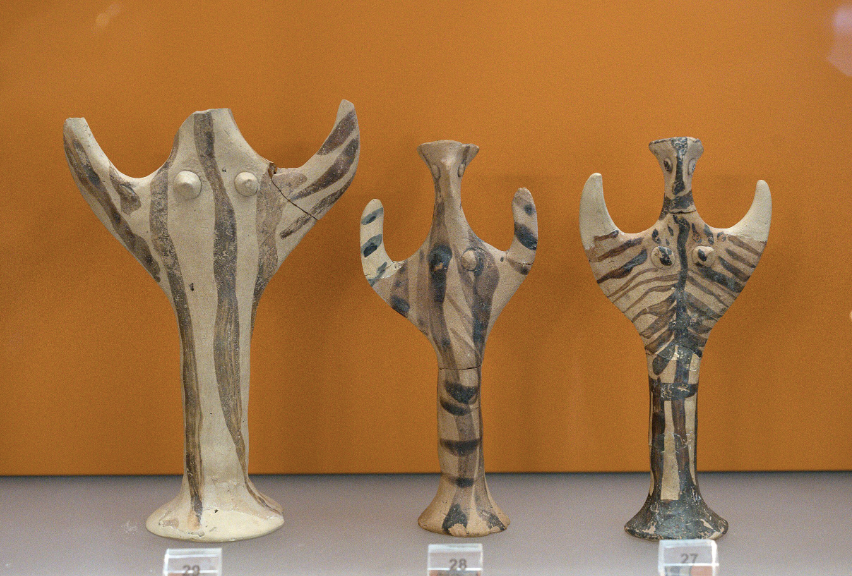
Identification: Late Mycenaean terracotta female figurines from the sanctuary of Athena Pronaia at Delphi (12th century BCE), originally grave offerings later repurposed and dedicated when the temple was built in the 7th century BCE.
Significance (one sentence): They reveal the continuity of cult activity at Delphi from the Mycenaean period onward, showing how older ritual objects were integrated into later Greek religious practice.
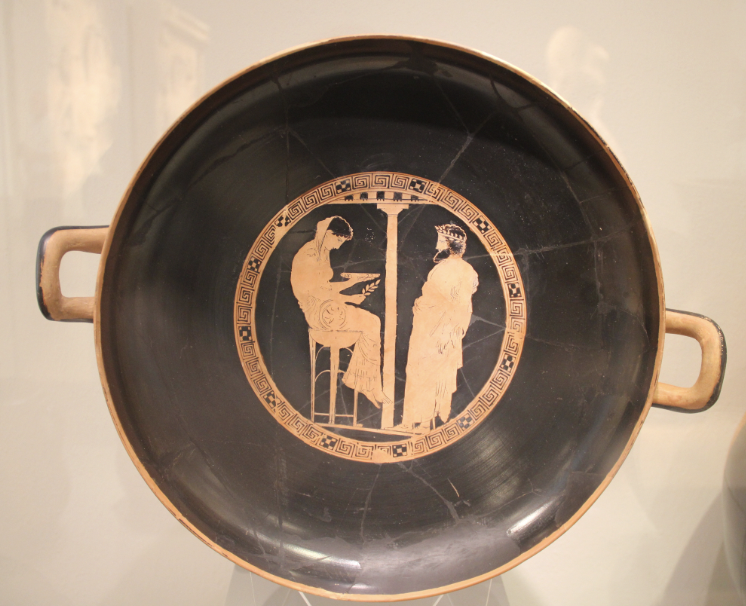
Identification: Red-figure kylix by the Kodros Painter (ca. 440 BCE) depicting Aigeus, the mythical king of Athens, consulting the oracle Themis at Delphi.
Significance (one sentence): It illustrates the central role of Delphi in Greek myth and religion, emphasizing divine guidance, prophecy, and the human quest for knowledge through oracular consultation.
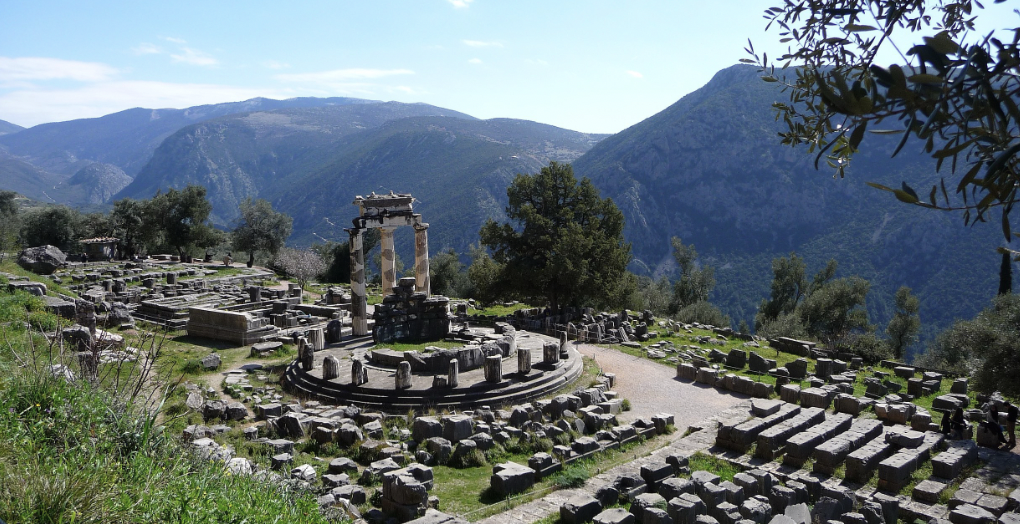
Identification: The Tholos in the Sanctuary of Athena Pronaia at Delphi, built around 380–360 BCE.
Significance (one sentence): Its elegant circular design showcases the architectural innovation and sacred grandeur of Delphi, marking the sanctuary’s role as a key site of worship and artistic achievement in Classical Greece.
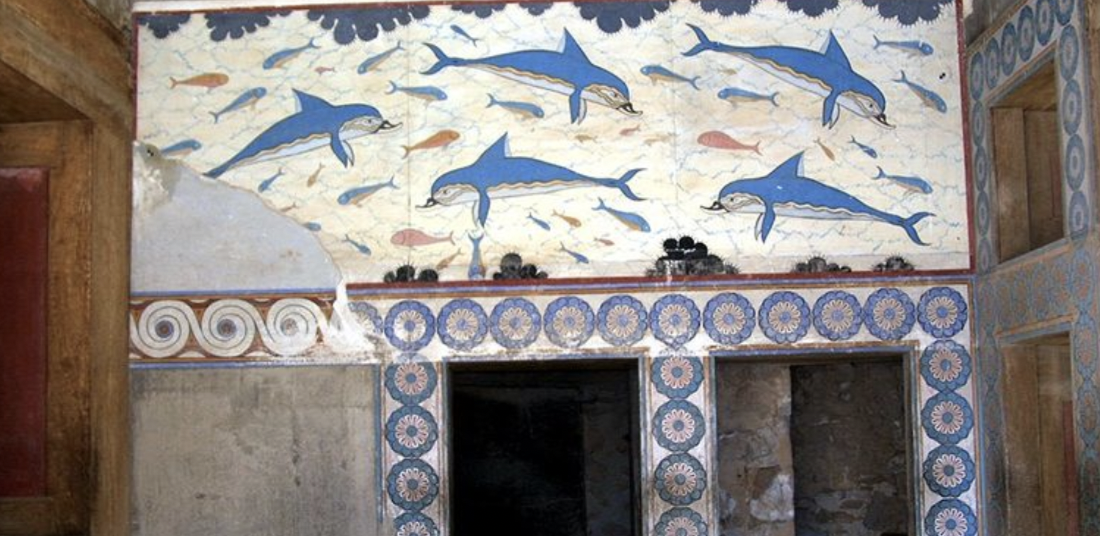
Identification: Fresco of the Dolphins from the Palace of Knossos, Crete, dating to the Minoan period (c. 1500 BCE).
Significance (one sentence): It highlights Minoan artistic skill and their fascination with marine life, reflecting the cultural and symbolic importance of the sea in Minoan society.

Identification: King’s Throne at the Palace of Knossos, Crete, restored by Emile Gilliéron and Piet de Jong in the early 20th century, dating to the Minoan period (c. 1600–1450 BCE).
Significance (one sentence): It reflects Minoan political or ritual authority, providing insight into palace hierarchy, ceremonial practices, and the symbolic use of space in Minoan society.

Identification: Depictions of Mycenaean-style armor in Hittite art (c. 13th century BCE), often showing boar’s tusk helmets and figure-eight shields.
Significance (one sentence): They illustrate cross-cultural contact and mutual awareness between the Mycenaean Greeks and the Hittite Empire, reflecting shared military technology and diplomacy in the Late Bronze Age.
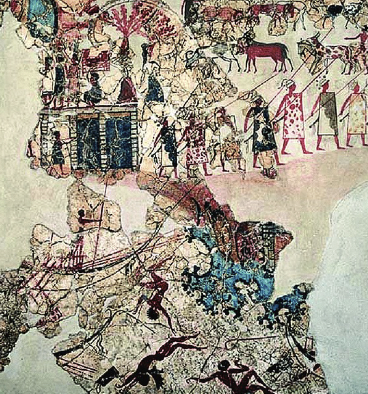
Identification: North Wall Frieze from the West House at Akrotiri, Thera, dating to around 1650 BCE, part of the Minoan-style fresco cycle.
Significance (one sentence): It depicts vivid scenes of ships and coastal towns, revealing the sophistication of Aegean art and the central role of maritime life in Cycladic society.
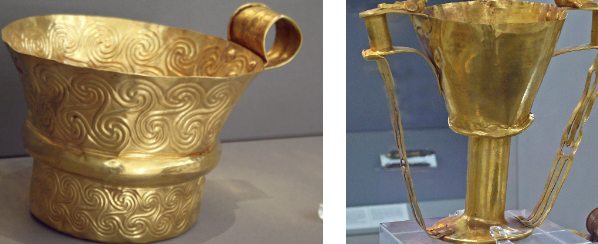
Identification: Mycenaean gold cups from Mycenae, dating to around 1500 BCE, found in elite shaft graves.
Significance (one sentence): They demonstrate the wealth, craftsmanship, and far-reaching trade connections of Mycenaean aristocracy in the early Bronze Age Aegean.

Identification: Lion Hunt Dagger from Shaft Grave IV at Mycenae, dating to 1550–1500 BCE, with gold and silver inlay on a bronze blade.
Significance (one sentence): It showcases Mycenaean artistry and elite status, blending Minoan and Near Eastern motifs to symbolize power, heroism, and royal identity.

Identification: Warrior Fresco from the Palace of Pylos, ca. 1250 BCE, reconstructed by Piet de Jong.
Significance (one sentence): It depicts armed Mycenaean soldiers in procession, reflecting the militarized culture and hierarchical order of Late Bronze Age Greece.

Identification: Gold, lapis lazuli, and glass pendants depicting the Egyptian goddess Hathor, found in the Palace of Nestor at Pylos, dating to around 1400 BCE.
Significance (one sentence): They reveal Mycenaean engagement in long-distance trade and cultural exchange with Egypt, highlighting the interconnectedness of Late Bronze Age civilizations.

Identification: Artifacts from the Tomb of the Griffin Warrior at Pylos, including gold rings depicting bull-leaping and women before a shrine (ca. 1450 BCE), and an agate sealstone (ca. 1630–1440 BCE) showing a warrior looming over a lion.
Significance (one sentence): Together they exemplify the wealth, artistry, and symbolic power of Mycenaean elites, blending Minoan religious imagery with heroic themes that celebrate dominance, ritual, and divine favor.
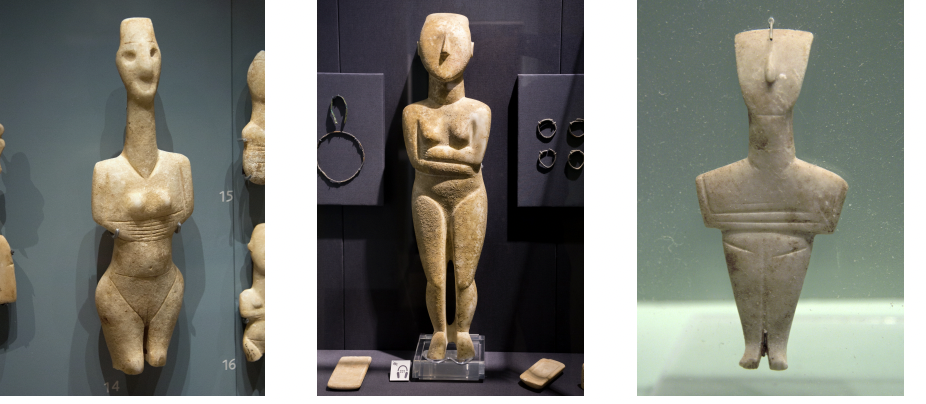
Identification: Cycladic figurine, a marble sculpture from the Cycladic Islands in the Aegean Sea, dating to the Early Bronze Age (c. 3rd-2nd c. BCE).
Significance (one sentence): Its abstract, geometric form reflects early Aegean artistic expression and offers insight into Cycladic beliefs about the human body, ritual, and identity.
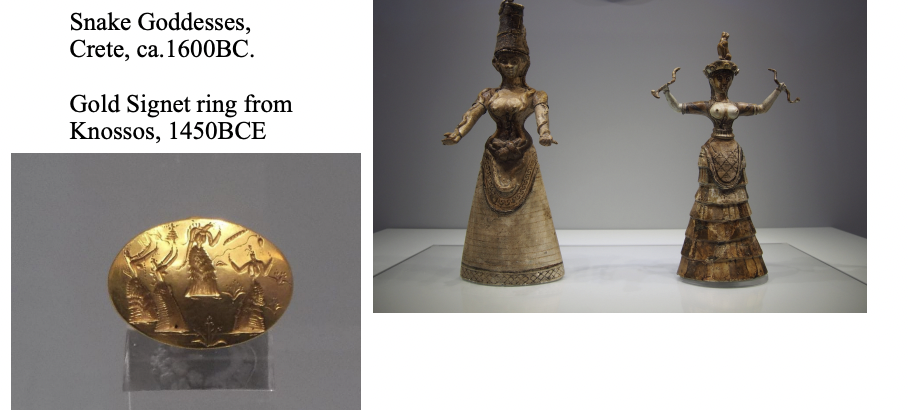
Identification: Minoan Snake Goddesses from Crete (ca. 1600 BCE) and a gold signet ring from Knossos (ca. 1450 BCE), both depicting ritual and divine imagery.
Significance (one sentence): They reflect Minoan religious beliefs centered on female deities, nature worship, and ritual authority, emphasizing the symbolic role of women and animals in Minoan spirituality.
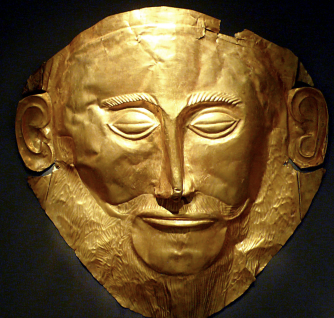
Identification: The “Mask of Agamemnon,” a gold funerary mask from Grave Circle A at Mycenae, dating to around 1500 BCE.
Significance (one sentence): It represents Mycenaean craftsmanship and elite burial customs, symbolizing the power and wealth of early Greek rulers.
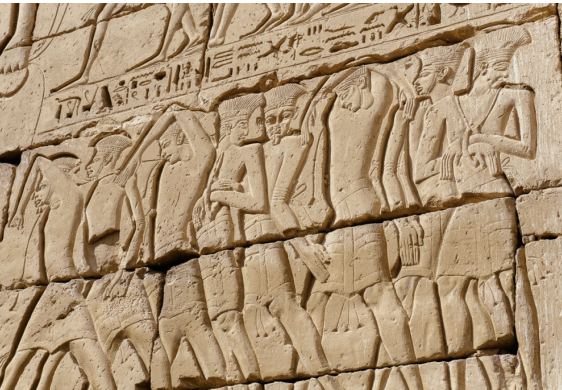
Identification: Stone relief at the temple of Ramses III at Medinet Habu, Egypt, depicting Peleset (Sea Peoples) prisoners, dating to the 12th century BCE.
Significance (one sentence): It documents Egypt’s conflicts with the Sea Peoples, providing historical evidence of Late Bronze Age migrations and the upheavals that contributed to the Eastern Mediterranean collapse.
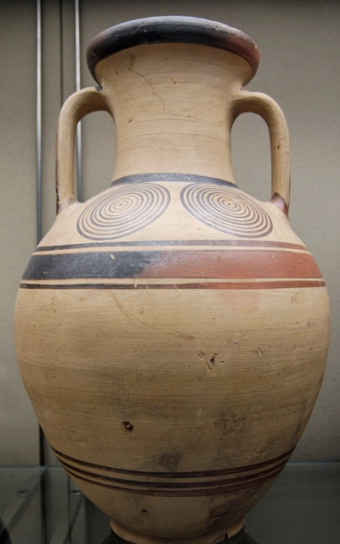
Identification: Protogeometric amphora from the Kerameikos cemetery in Athens, dating to around 975–950 BCE.
Significance (one sentence): It reflects the revival of Greek pottery after the Bronze Age collapse, emphasizing geometric decoration and the continuation of funerary traditions in the Early Iron Age.
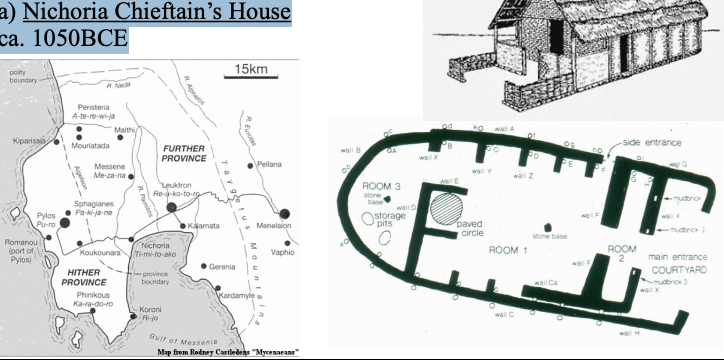
Identification: Chieftain’s House at Nichoria, Greece, dating to around 1050 BCE in the Early Iron Age.
Significance (one sentence): It demonstrates continuity of elite residence and social hierarchy after the Bronze Age collapse, showing that some regional centers retained structured leadership and domestic organization.
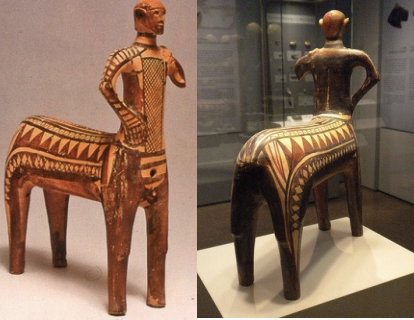
Identification: Terracotta Centaur figurine (possibly Cheiron) from a grave at Lefkandi, Greece, dating to around 900 BCE.
Significance (one sentence): It reflects Early Iron Age Greek engagement with mythological motifs and suggests the persistence of long-distance trade and cultural exchange through imported materials and artistic influences.
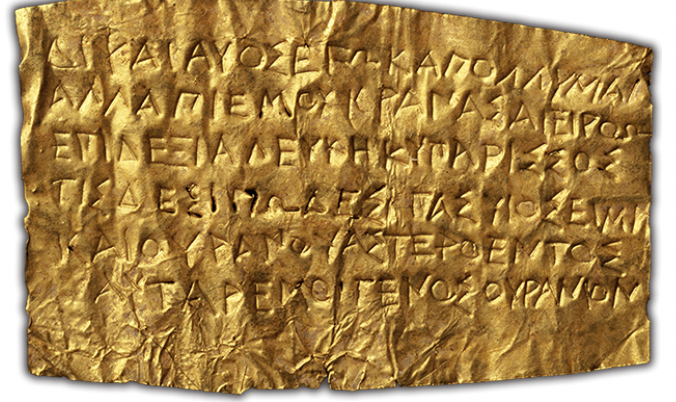
Identification: Funerary tablet with instructions for the deceased in the Underworld, dating to 350–300 BCE.
Significance (one sentence): It illustrates Greek beliefs about death and the afterlife, showing the importance of ritual guidance to ensure safe passage and proper treatment of the dead.
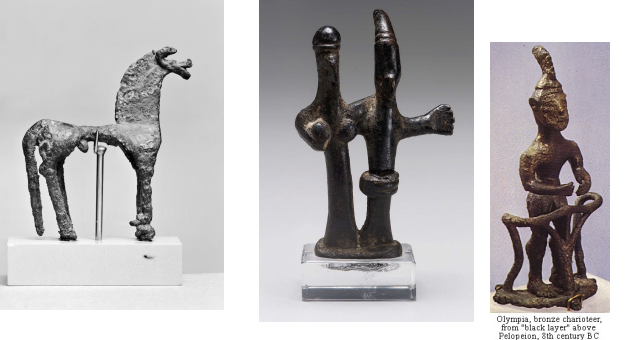
Identification: Figurines dedicated at Olympia, dating from the 10th to 8th centuries BCE, showing a dramatic increase in offerings.
Significance (one sentence): The rising number of animal figurine dedications reflects Olympia’s growing importance as a Pan-Hellenic religious and cultural center leading to the establishment of the Olympic Games.
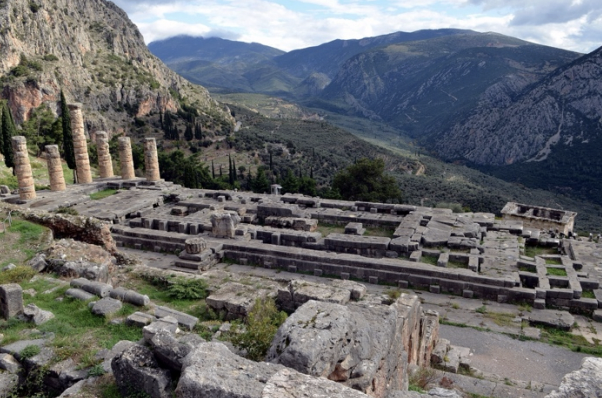
Identification: Temple of Apollo at Delphi, Greece, originally constructed in the 6th century BCE and rebuilt in the 4th century BCE.
Significance (one sentence): It served as the central sanctuary of the Delphic oracle, symbolizing divine authority, prophecy, and the pan-Hellenic religious and cultural significance of Delphi.
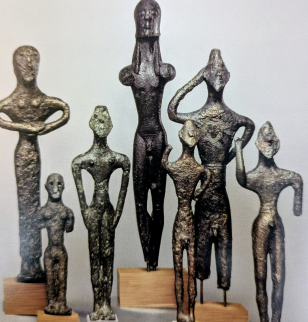
Identification: Cult of Apollo Pythios at Delphi, established around 900 BCE, with a village by 860 BCE and increasing oracular dedications throughout the 7th century BCE.
Significance (one sentence): It demonstrates Delphi’s growth as a major religious center, attracting offerings from across the Greek world and reinforcing Apollo’s pan-Hellenic cult and prophetic authority.
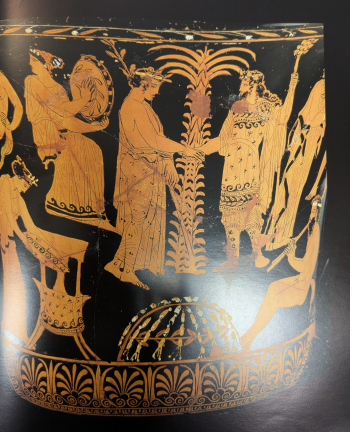
Identification: Red-figure krater by the Kadmos Painter (early 4th century BCE) depicting Apollo welcoming Dionysus at Delphi, above the omphalos.
Significance (one sentence): It symbolizes the balance of Apolline order and Dionysian ecstasy in Greek thought, linking divine duality to ritual, prophecy, and human experience at Delphi.
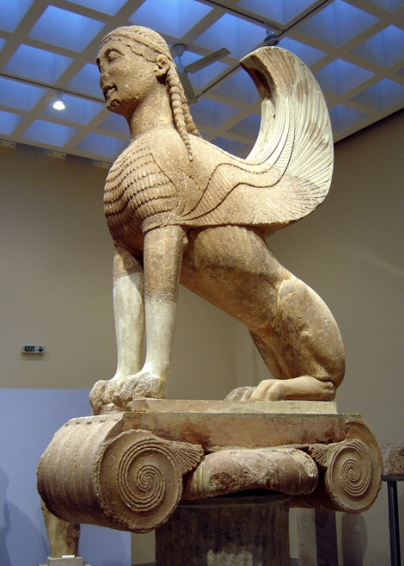
Identification: Sphinx of the Naxians, originally placed atop a tall column at the Sanctuary of Apollo, dating to around 560 BCE.
Significance (one sentence): It demonstrates early Greek monumental sculpture and dedication practices, serving both as a votive offering and a symbol of the sanctuary’s prestige.

Identification: Athenian Treasury at Delphi, built in the early 5th century BCE to house offerings from Athens at the Sanctuary of Apollo.
Significance (one sentence): It reflects Athens’ wealth, political influence, and religious devotion, showcasing the use of monumental architecture to display civic prestige in a pan-Hellenic sanctuary.
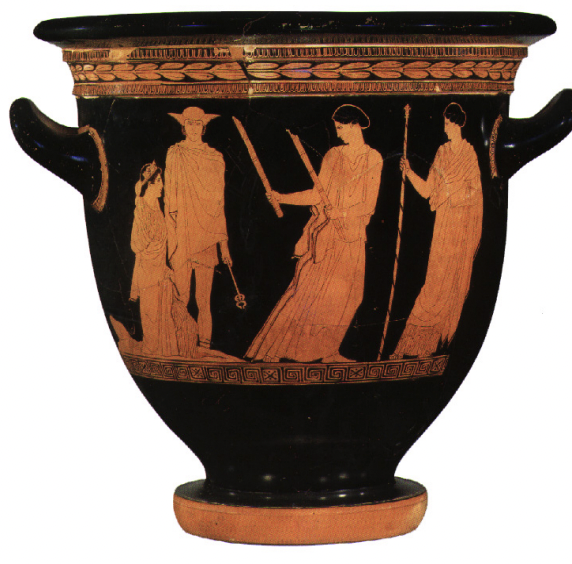
Identification: Attic Red-Figure Krater, 5th century BCE, depicting Hermes leading Persephone from the Underworld to be greeted by Hekate and Demeter.
Significance (one sentence): It illustrates Greek mythological themes of life, death, and seasonal cycles, emphasizing divine roles in human and natural order.
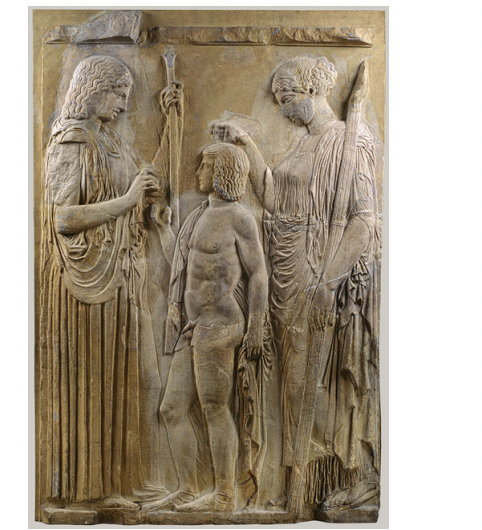
Identification: Marble votive relief from Eleusis, Greece, dating to 440 BCE, depicting Demeter, Triptolemos, and Persephone.
Significance (one sentence): It reflects the religious significance of the Eleusinian Mysteries, highlighting themes of fertility, agriculture, and the cycle of life and death in Greek cult practice.
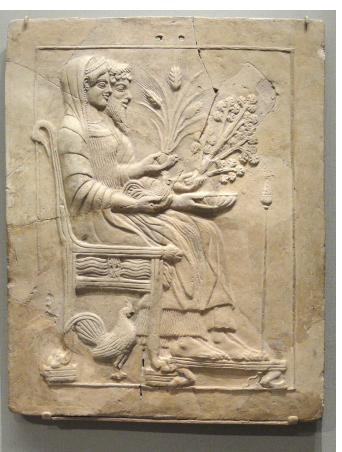
Identification: Marble pinax depicting Persephone and Hades, from the Sanctuary of Persephone in Locri, Sicily, dating to the early 5th century BCE.
Significance (one sentence): It illustrates Greek myth and chthonic worship in colonial contexts, emphasizing themes of the underworld, divine relationships, and local religious devotion.

Identification: Ninnion Tablet, red clay, circa 370 BCE, found at Eleusis, depicting the Eleusinian procession and initiation rites.
Significance (one sentence): It provides the only known visual representation of the Eleusinian Mysteries, offering insight into secretive religious rituals and their ceremonial significance in ancient Greece.